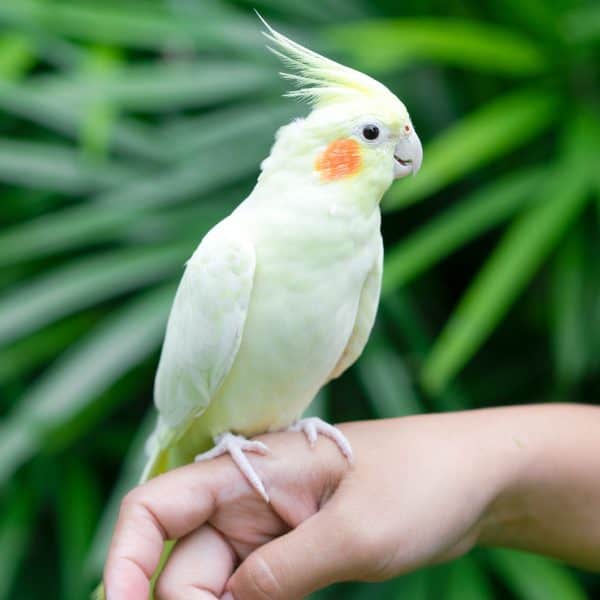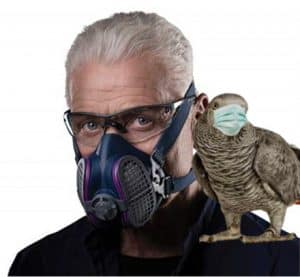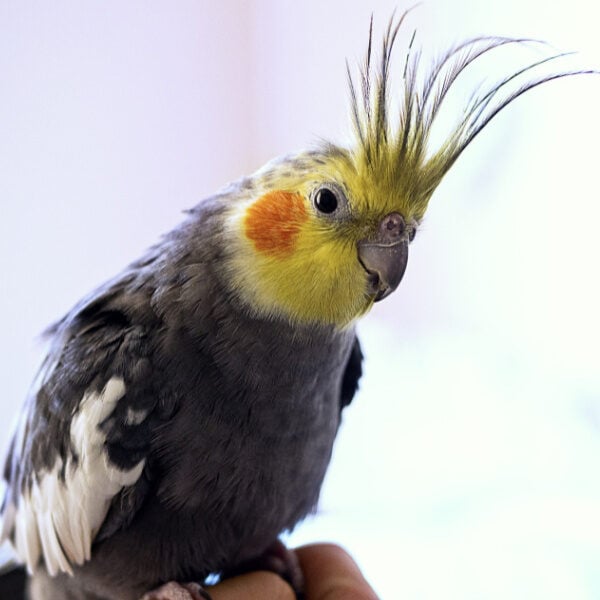Last Updated on by Catherine Tobsing
In contrast to mammals, birds exhibit remarkable longevity relative to their physical size.
The higher metabolic rate, elevated body temperature, and increased resting glucose found in avian species suggest a potential amplification in the aging process.
Surprisingly, however, these metabolic aspects do not actually result in a shorter lifespan for birds, as one might expect. On the contrary, they seem to contribute to an extended period of existence.
Birds possess unique adaptations that enable them to defy the effects of accelerated aging caused by heightened metabolic activities, thus contributing to their remarkable longevity. How do they achieve such a feat?
The act of taking flight grants a means of eluding predators. Evidence indicates that both birds and flying mammals enjoy extended lifespans compared to their non-flying counterparts.
Recent findings have revealed that animals engaging in regular physical exertion tend to live longer than those leading less active lifestyles. Interestingly, despite the higher energy demands involved in flying, birds display lower levels of oxidative damage in their mitochondrial DNA.
What implications arise from this realization? The regular functioning of our metabolic processes is directly associated with the generation of free radicals, which tend to attach themselves to cellular elements, with a particular affinity for membranes.
Consequently, this results in the aging of membranes and interferes with their typical operations, leading to less efficient performance or malfunctioning.
Contrary to common belief, birds, especially parrots known as psittacines, defy expectations by exceeding their anticipated lifespan.
An astonishing example is found in large macaws, who manage to live four times longer than projected.
The fascinating aspect is that birds, overall, possess a unique ability to diminish oxidative damage.
It indicates that these remarkable creatures either possess lower levels of reactive oxygen species (ROS) or have masterfully devised strategies to mitigate the harmful effects caused by such species.
Birds possess a wide range of intricate methods to minimize harm caused by oxidative processes. An intriguing instance of this can be observed in the male quail, which displays adaptability in their hypothalamo-pituitary-gonadal axis, despite experiencing a decline in fertility as they get older.
If humans were able to demonstrate such flexibility as they age, it would be remarkable!
Another fascinating phenomenon that challenges prevailing beliefs regarding mammals is the regrowth of neurons associated with songs seasonally in the white matter tracts of passerines’ central nervous system.
Studying the process of cell regeneration in the spinal cord and brain could potentially offer valuable insights that would significantly benefit individuals suffering from strokes or spinal cord injuries.
When does a bird become classified as a senior avian creature?
There exists a particular worry pertaining to the demise of aging animals, such as wild birds, before they exhibit any signs of growing old. Yet, the findings from studies conducted on birds over extended periods invalidate this concern.
Consequently, when examining our avian companions, we are compelled to inquire, at what stage of life do they reach geriatric status?
According to the research conducted by Drs. Dury Reavill and Gerry Dorrestein, an investigation into the correlation between age and the manifestations of aging in older pet birds revealed some interesting findings.
Specifically, small avian species such as budgies and lovebirds were classified as senior if they were over 6 years old. On the other hand, the age threshold for cockatiels was set at 12 years. As for larger species like Amazons, macaws, cockatoos, and African grey parrots, they were considered senior only after surpassing 30 years of age.
As companion birds grow older, clinicians have noted various conditions that commonly affect them. Senior birds often develop tumors, and budgerigars in particular are susceptible to pituitary tumors.
Additionally, psittacines of different species may experience cataracts and retinal changes. Aging birds also tend to face limitations in their range of motion and are prone to osteoarthritis.
However, identifying osteoarthritis through radiographic evidence can be a challenging task. Moreover, as our parrot friends age, they are more likely to suffer from chronic renal and liver diseases.
Birds that have aged are more prone to experiencing the symptoms of gout. This condition manifests when the kidneys start to deteriorate, leading to the buildup of uric acid in the joints or on organ surfaces.
As birds grow older, they are prone to experiencing a higher prevalence of endocrine diseases, often accompanied by gonadal degeneration.
Additionally, atherosclerosis and heightened pulmonary hypertension have been observed in these cases. Among the avian species affected, blue-fronted Amazon parrots (91.4%), Congo African greys (91.9%), and macaws are most commonly affected.
Typically, atherosclerosis manifests around the age of 12, predominantly in the brachiocephalic trunk as well as the pectoral and carotid arteries, where plaques tend to develop.
It is quite fascinating that the occurrence of fatty modifications in the coronary arteries is a truly uncommon phenomenon. These significant alterations generally emerge as a consequence of adopting high-fat eating patterns and leading sedentary lifestyles.
Ways To Enable Your Pet Bird To Prosper In Their Golden Years
How can we ensure our aging parrots receive high-quality care? An essential initial measure involves scheduling a yearly examination for your senior bird with an avian veterinarian.
When examining elderly pet birds, it is vital to thoroughly assess their condition by conducting a comprehensive physical examination. This involves inspecting the eyes for any signs of cataracts, evaluating the feather quality, and diligently scrutinizing the skin for any unusual bumps or lumps.
Furthermore, it is necessary to palpate their joints and gauge any changes in their mobility. In case the bird experiences discomfort, it becomes essential to listen to their heart and lungs, measure their blood pressure, and undertake a general palpation (a method of feeling with the fingers or hands during a physical examination) of their entire body.
The individual patient might require further diagnostic tests.
What are some ways in which we can assist our elderly avian companions? The initial measure to take is to ensure they receive a nourishing diet that consists of well-balanced omega fatty acids, which play a role in neutralizing the harmful effects of free radicals.
Furthermore, their food should contain slightly higher levels of vitamins E and C, as these particular nutrients are expended more rapidly as animals grow older.
The preservation of bodily membranes, ranging from the respiratory system to the digestive system and the kidney tubules, relies on the significance of both vitamin A and beta-carotene.
Supporting the immune system relies on the presence of Vitamin A, which plays a crucial role. By bolstering the immune system, infections can be avoided and the risk of tumors can be decreased.
Conversely, seed-based diets lack these vital vitamins. To address this issue, Nutri-Berries, Avi-Cakes, and Senior Nutri-Berries offer a solution by providing these essential vitamins.
Moreover, these products are well-rounded with the inclusion of omega fatty acids and non-GMO ingredients.
Senior Bird Nutri-Berries offer a blend of milk thistle, dandelion, and ginger, essential for promoting wellness in various organ systems.
Hailing from the Mediterranean region, milk thistle, also known as Saint Mary’s thistle, has been traditionally utilized to address chronic hepatitis in humans.
Its potential to benefit our avian companions lies in its unique ability to fortify cell membranes, boost protein synthesis, and facilitate the healing and regeneration of injured liver tissue.
Milk thistle possesses healing properties that aid in the recovery of wounds and combat the process of skin degeneration. It achieves this by acting as an anti-inflammatory agent and by actively seeking out and eliminating harmful free radicals.
The primary constituent of milk thistle, known as silymarin, contributes to these beneficial effects. In addition to its anti-inflammatory and anti-arthritic impact in rats, silymarin also enhances the flow of bile and encourages the secretion of bile salts.
Dandelion, a plant that thrives year after year, has garnered attention for its ability to stimulate the production and improve the flow of bile. Additionally, the high concentration of choline found in dandelion may contribute to enhancing liver function.
Notably, individuals experiencing severe liver issues such as decreased appetite, low energy levels, jaundice, and inadequate bile secretion experienced a notable decrease in blood cholesterol levels following a 20-day treatment of dandelion.
Furthermore, their liver function tests exhibited improvement during this period.
Our elderly avian companions stand to gain tremendous advantages from all these provisions.
Ginger, a versatile plant, possesses properties beyond its common use as a spice. This medicinal herb possesses the capability to alleviate nausea by diminishing stimuli in the gastrointestinal tract. Its inhibitory effects on the cyclo-oxygenase and lipo-oxygenase pathways also result in the inhibition of prostaglandin and leukotriene synthesis, showcasing its potent antioxidant capabilities.
Additionally, ginger has proven to be beneficial in enhancing cardiovascular health and combating osteoarthritis, thus offering potential relief for senior avian individuals plagued by these issues.
The elderly birds among us serve as a wellspring of vitality when compared to members of the mammal group, and it falls upon us to assist them in achieving enhanced states of well-being throughout their journey.
Written and Approved by the Windy City Parrot Content Team.
Author Profile
Latest entries
 The Traveling BirdJune 26, 2025Can You Name 5 Parrot Species That Are Living Wild in the USA?
The Traveling BirdJune 26, 2025Can You Name 5 Parrot Species That Are Living Wild in the USA? Bird BehaviorJune 26, 2025How is it Parrots Are Problem Solvers Social Animals and Even Use Tools?
Bird BehaviorJune 26, 2025How is it Parrots Are Problem Solvers Social Animals and Even Use Tools? Bird & Parrot AnatomyJune 25, 2025How a Tiny Chemical Modification Makes Parrots Nature’s Living Paintings
Bird & Parrot AnatomyJune 25, 2025How a Tiny Chemical Modification Makes Parrots Nature’s Living Paintings PigeonsJune 20, 2025How Do Parrots Thrive in Cities Outside Their Native Habitats?
PigeonsJune 20, 2025How Do Parrots Thrive in Cities Outside Their Native Habitats?




